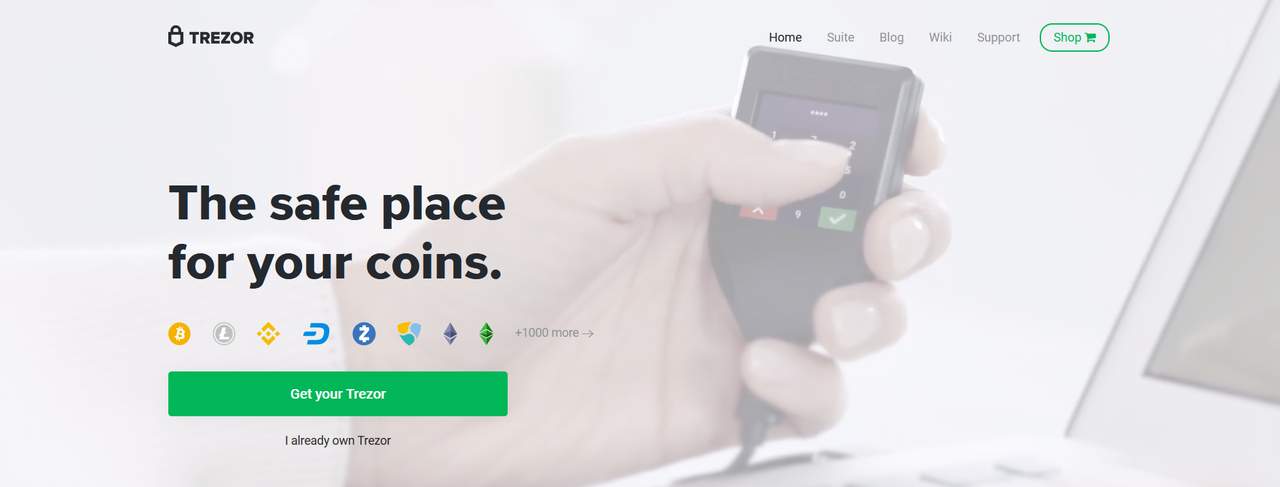Get Started with Trezor — Secure your crypto in minutes
A clear, practical walkthrough to initialize your Trezor device, create a recovery seed, use the Trezor Suite, and follow best security practices.
Welcome! Whether this is your first hardware wallet or you’re switching from another solution, the most important goal is simple: keep private keys offline and under your control. This guide walks you through the full initial setup (the steps covered on trezor.io/start) including unboxing, connecting, firmware verification, seed creation, and safe storage—plus practical tips to avoid common mistakes.
Before you begin — what you’ll need
Make sure you have:
- Your Trezor device and the USB cable included in the box.
- A desktop or laptop with a modern browser (Chrome, Brave, Edge, Firefox). Mobile setup is possible but a computer is recommended for the first run.
- Pen and recovery card (or a secure metal backup) to write your recovery seed. Do not photograph or copy the seed to a cloud service.
Step-by-step: Initialize your Trezor
Inspect the package for tamper-evidence. Connect the Trezor to your computer via the supplied cable. When prompted, visit trezor.io/start (or open the official Trezor Suite app if you have it installed).
Follow on-screen instructions to install Trezor Bridge or open Trezor Suite. These official apps enable the browser to talk securely with your device. Use only the official website—typing the address yourself avoids phishing links.
Your device may update its firmware. Always allow firmware updates only from official Trezor sources and verify that the device screen shows expected prompts. Modern Trezor firmware includes cryptographic checks to ensure authenticity.
Choose “Create new wallet” when asked. The device will generate a recovery seed (usually 12, 18, or 24 words). Write each word by hand on the recovery sheet provided. Repeat back words only to your device, never speak them aloud on a recorded channel.
The device will ask you to confirm a few words from the seed to ensure it was recorded correctly. This verification happens directly on the hardware device; do not confirm words shown on your computer screen unless the device requests it.
Create a strong PIN directly on the Trezor device. This PIN protects against unauthorized use if your device is stolen. Memorize the PIN; do not store it with your seed or in the cloud.
After these steps your device will be ready to receive and send cryptocurrencies via Trezor Suite, compatible wallets, or integration tools. Test with a small amount first to confirm everything works as expected.
Security best practices & tips
Follow these practical habits to keep funds safe:
- Never store your recovery seed digitally. No photos, no text files, no cloud backups.
- Use a metal backup if you want long-term durability: steel plates resist fire, water, and rot better than paper.
- Keep software up to date. Regularly update Trezor Suite and apply device firmware updates from the official sources.
- Use passphrase protection only if you understand its implications: it adds security but also increases responsibility (a lost passphrase means lost funds).
- Test recovery on a spare device if possible. Practicing recovery ensures your backup works when needed.
Quick FAQ
You can initialize a Trezor and generate a seed offline using Trezor Suite offline mode, but final steps like firmware updates or broadcasting transactions require a network-connected host. Keep your seed generation as isolated as feasible.
If you have your recovery seed, you can restore funds on another Trezor or compatible wallet. If you lose both the device and the seed, funds cannot be recovered.
Yes—treat the seed as the ultimate backup. Split backups (Shamir or multisig) are advanced options that reduce single-point risk for larger holdings.
Troubleshooting & recovery
If the device doesn’t respond, try a different USB cable or port. For connection errors, reinstall Trezor Bridge or update your browser. If you suspect firmware corruption, follow official recovery instructions at the Trezor support pages—only use links from the official domain.
Final words — your security checklist
- Seed written and stored offline ✔
- PIN configured on device ✔
- Firmware updated from official source ✔
- Test transaction with small amount ✔
Congratulations — you’re set! Keep practicing safe habits and revisit your backups periodically. When in doubt, consult the official documentation and community resources provided by Trezor.
Open trezor.io/start